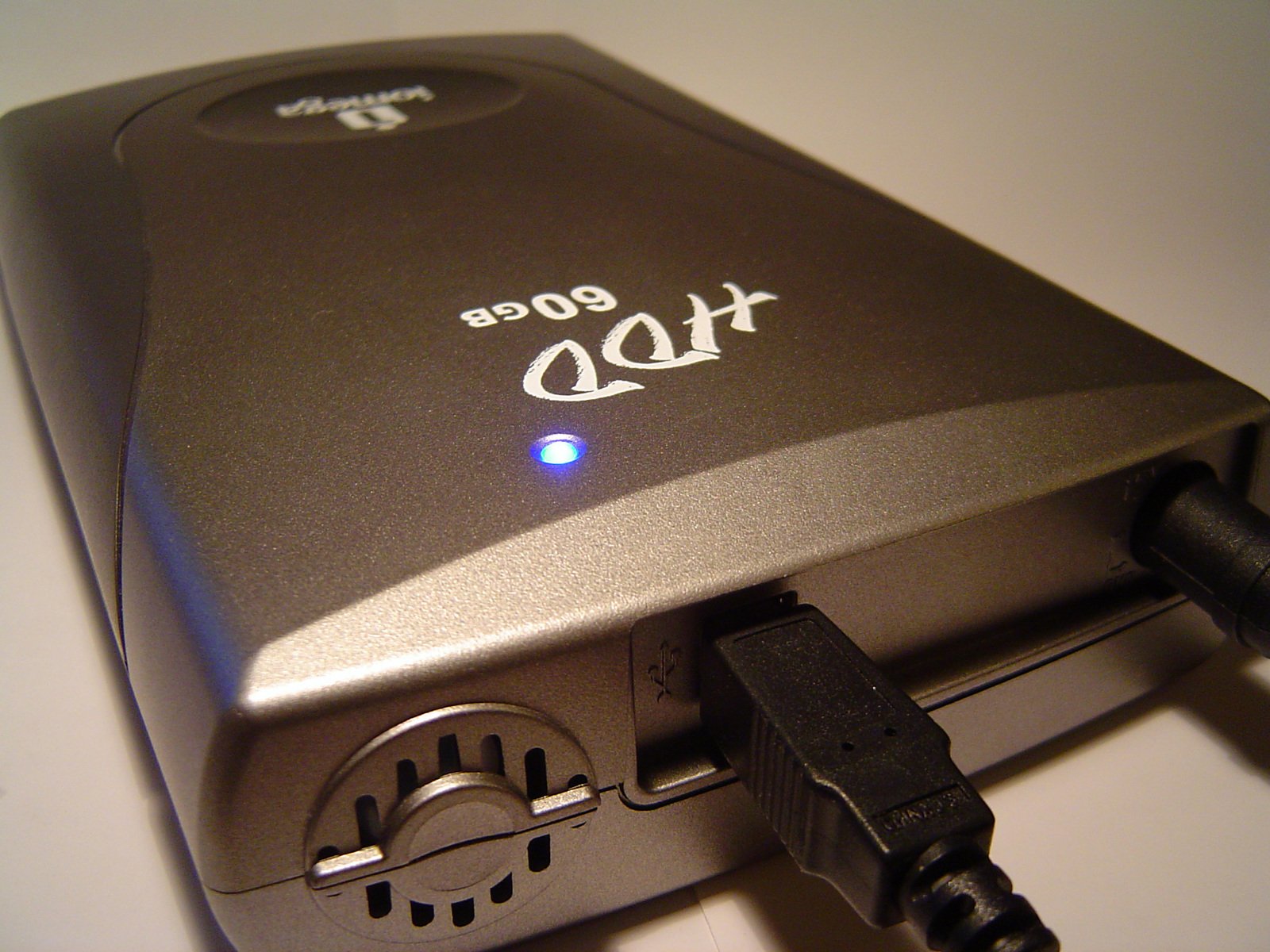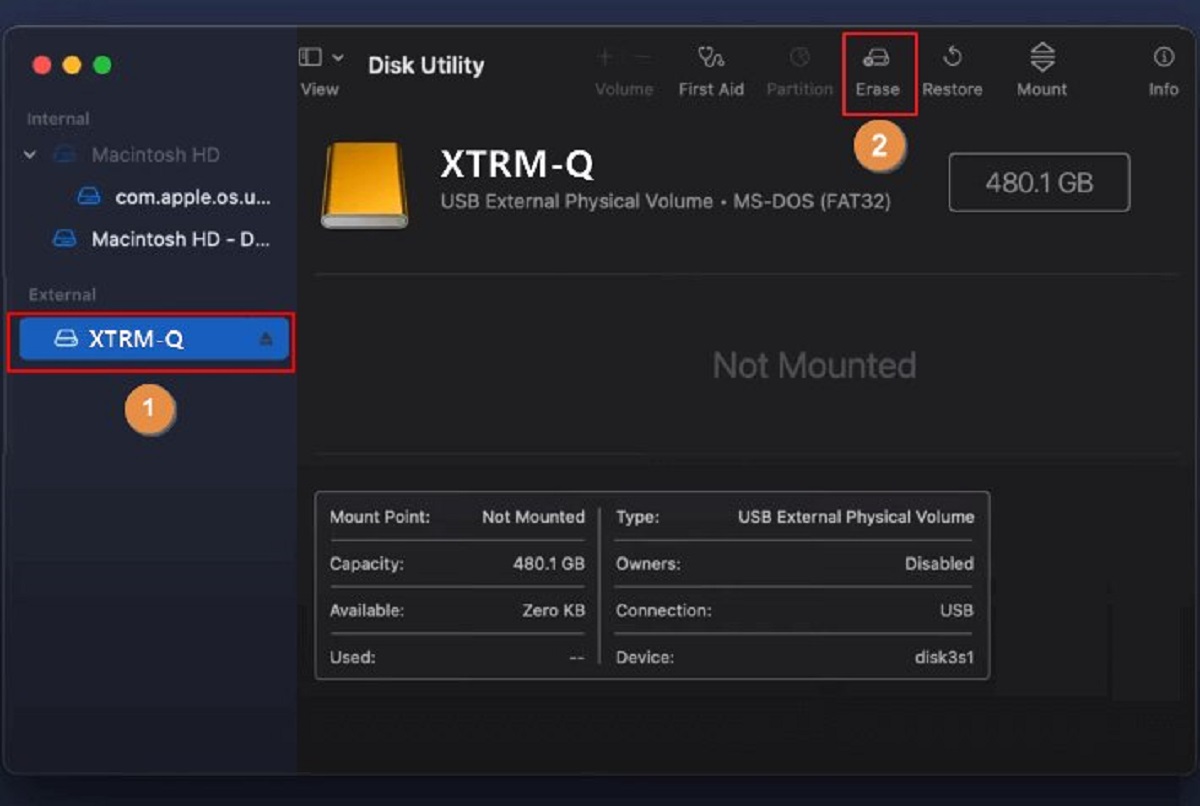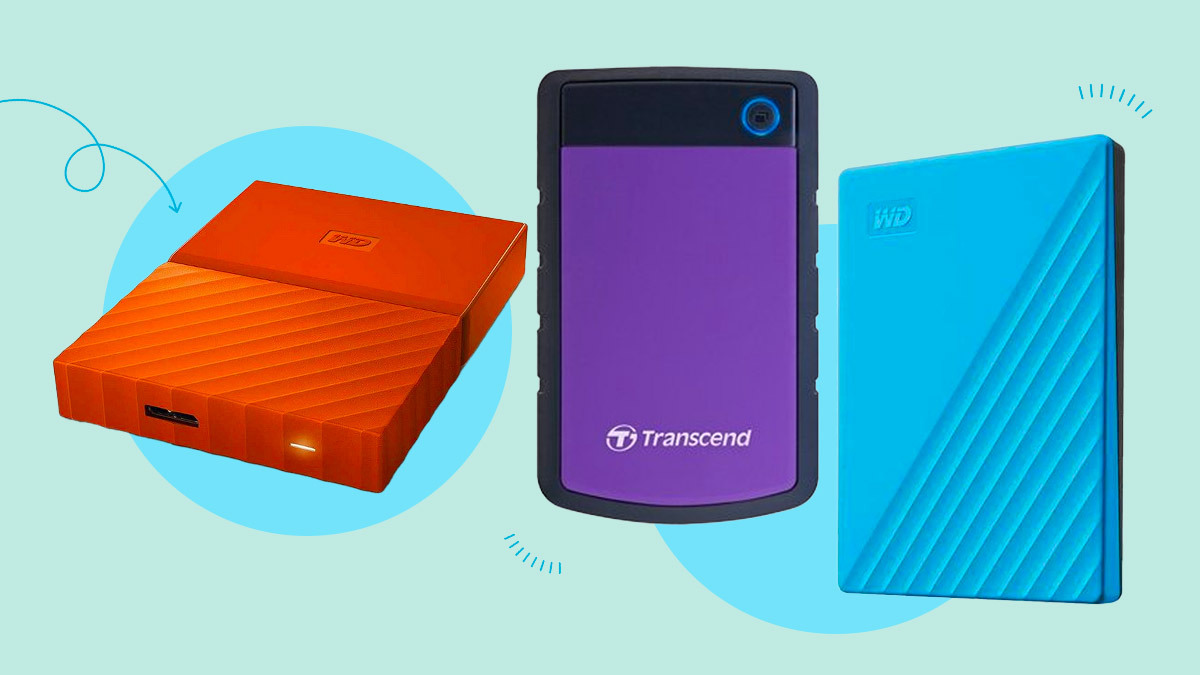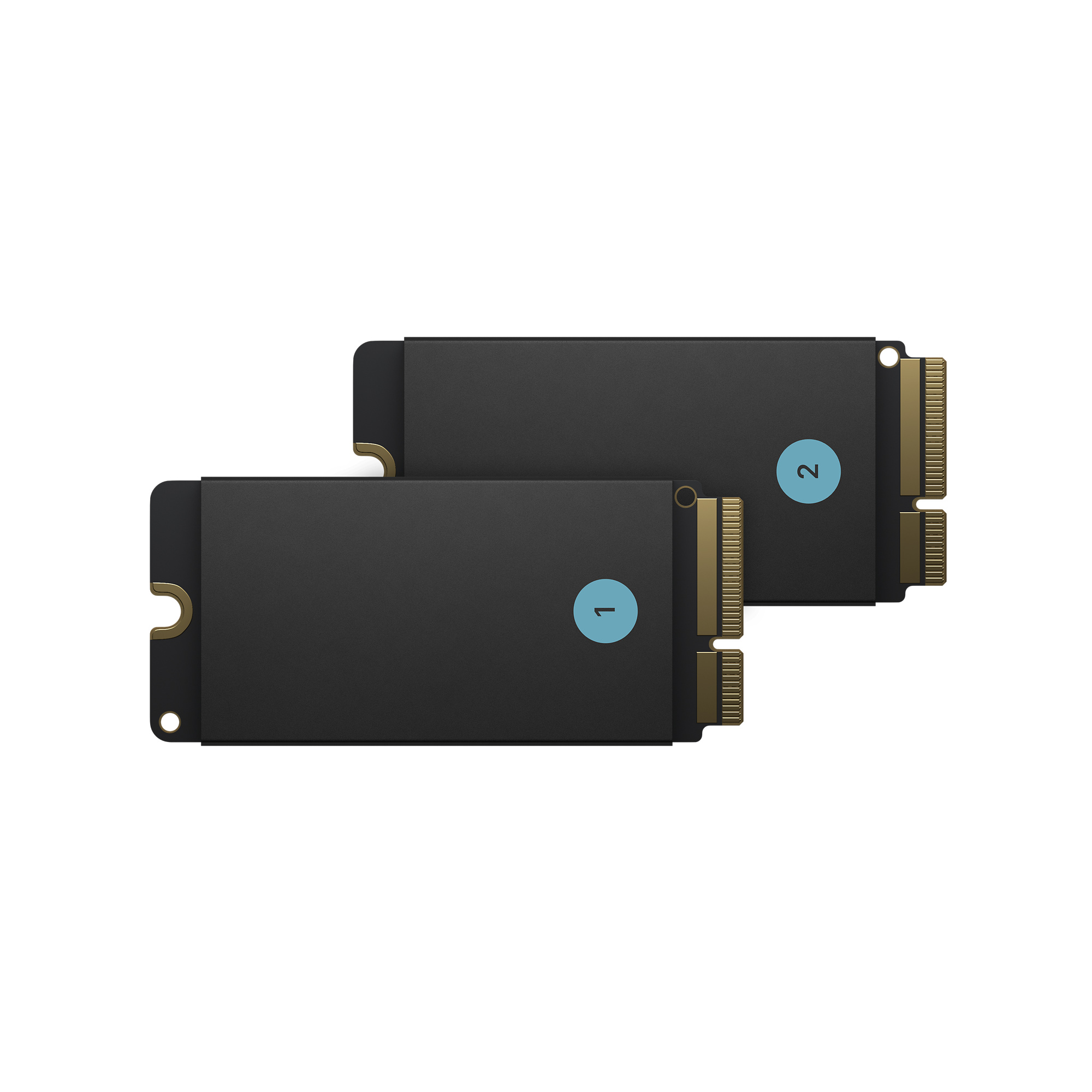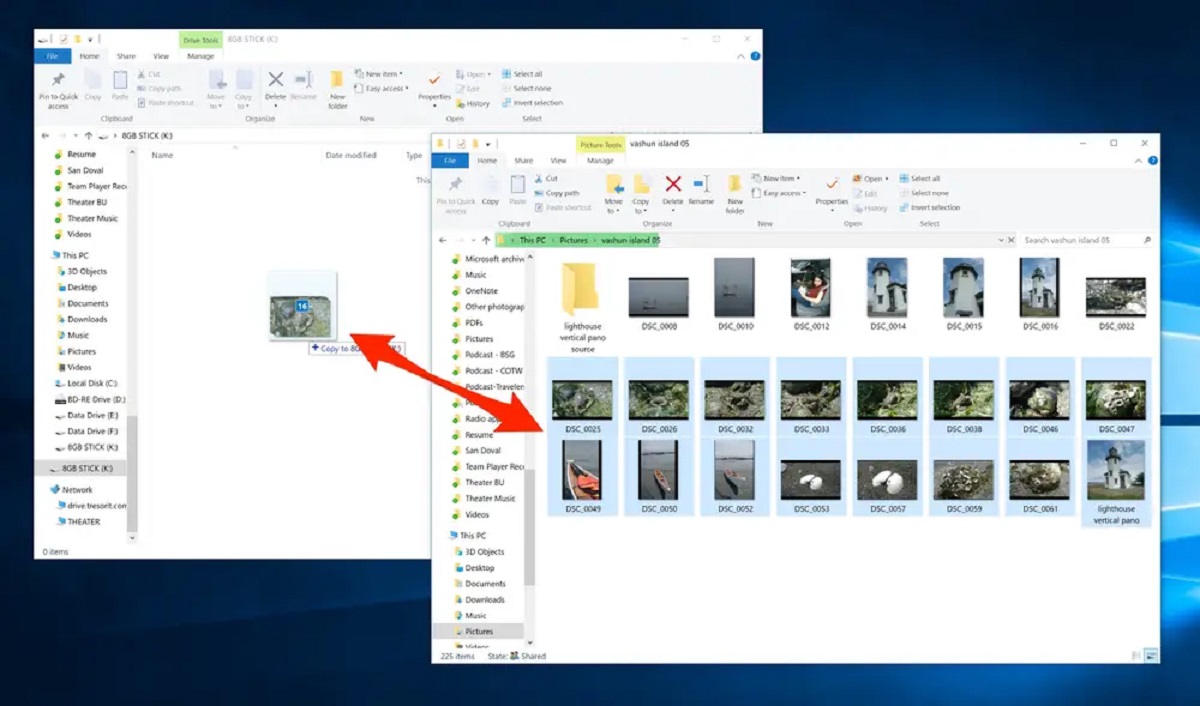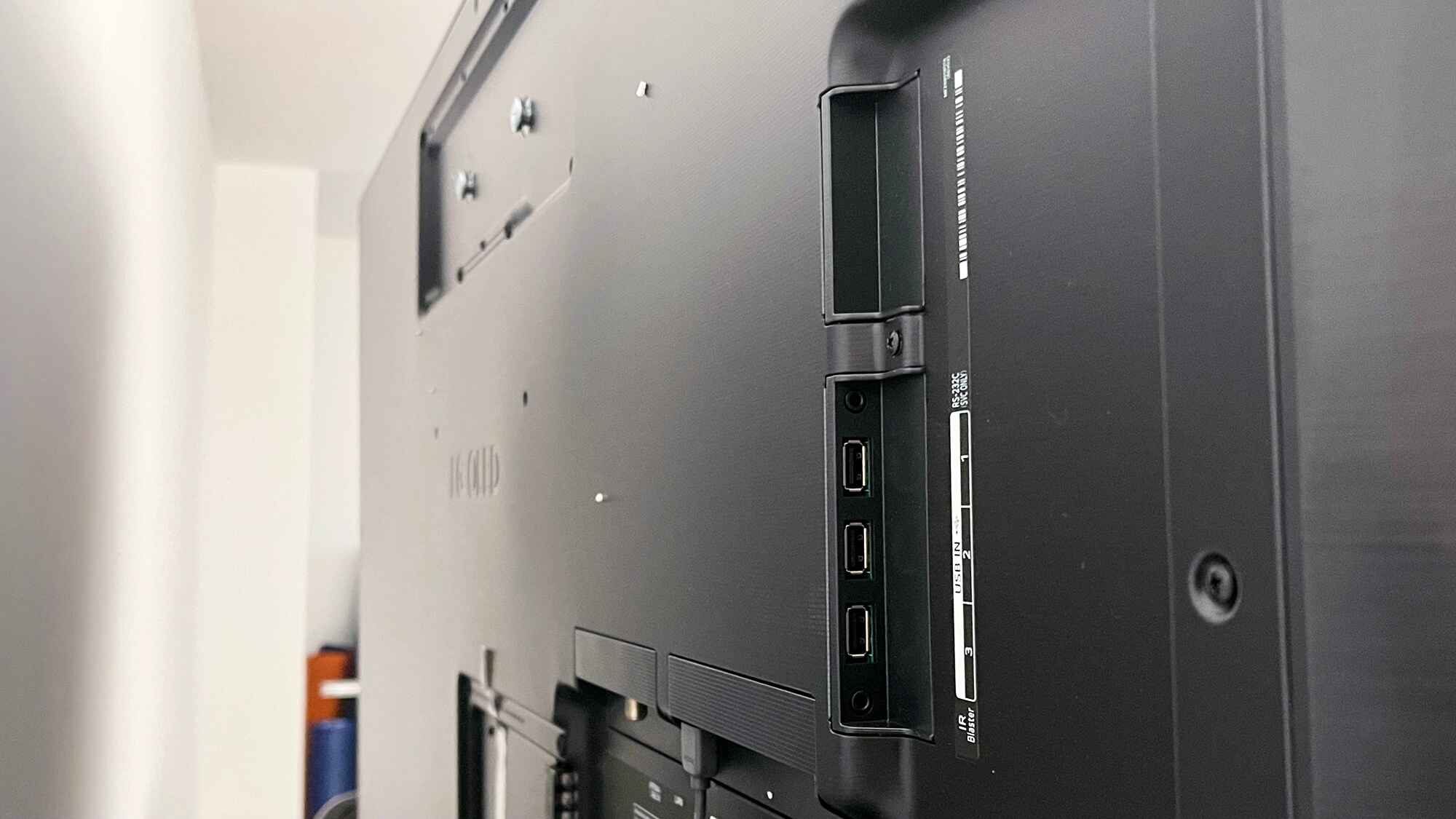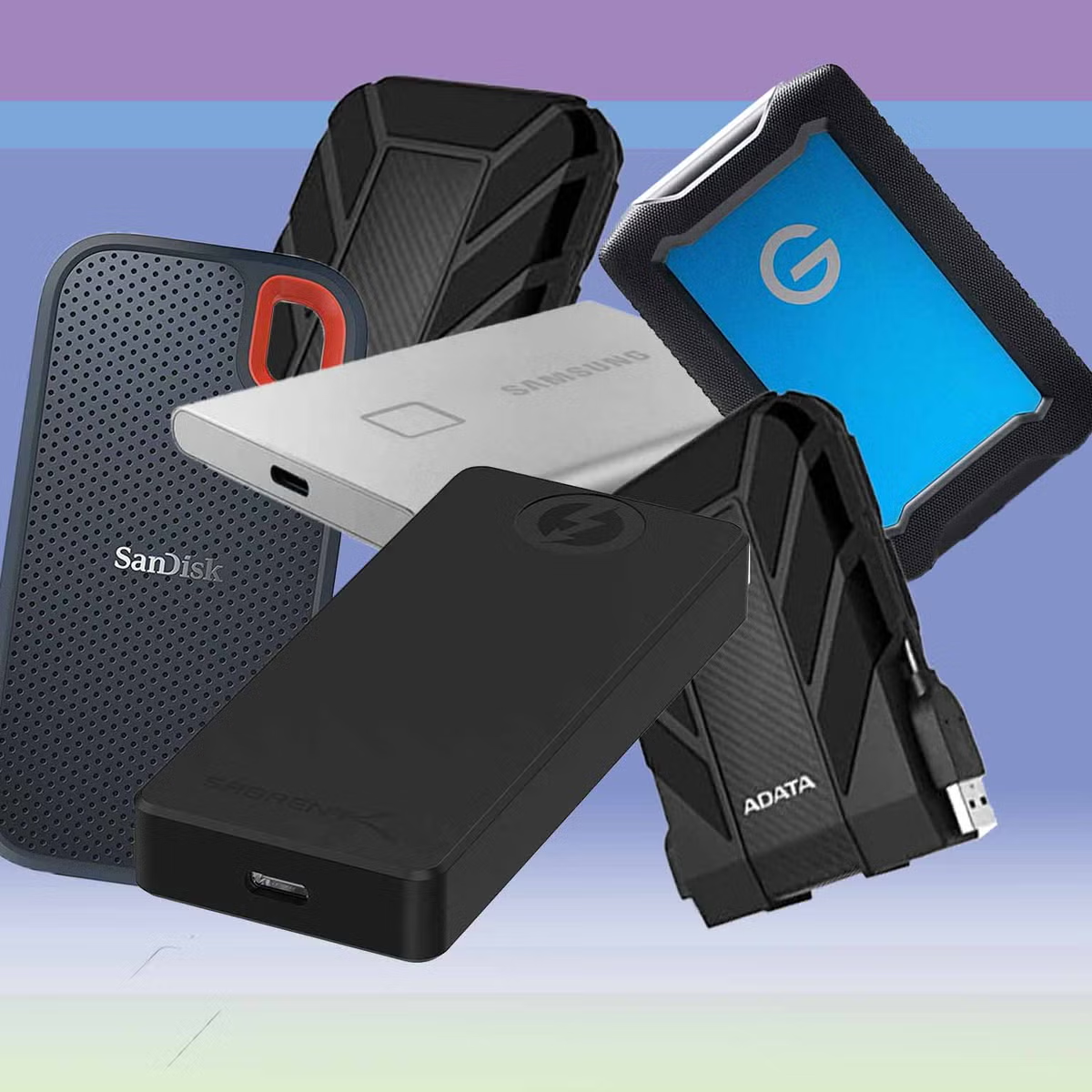Introduction
Welcome to our guide on understanding why your external hard drive is flashing. If you’ve noticed that the light on your external hard drive is constantly blinking or flashing, it can be a cause for concern. But don’t worry, we’re here to help you troubleshoot and identify the possible reasons behind this issue.
An external hard drive is a useful device that allows you to expand your computer’s storage capacity and easily store large files such as documents, photos, videos, and more. The blinking light on your external hard drive serves as an indicator, providing you with important information about the drive’s status and activity.
Before jumping into the potential causes of the flashing light, it’s important to understand that different external hard drives have different light patterns. Some drives may have a steady light, while others have a flashing one. Manufacturers design these lights to indicate different activities like data transfer, power status, or errors.
If your external hard drive’s light is flashing, it could be a sign of something wrong or just a normal operation. In this guide, we’ll explore the most common reasons behind the flashing light and provide you with troubleshooting steps to fix the issue.
Keep in mind that troubleshooting your external hard drive’s flashing light may require some technical knowledge, but don’t worry, we’ll explain each step in detail to make it as easy as possible.
Now, let’s dive into the possible causes of your external hard drive’s flashing light and how you can resolve them.
Understanding the External Hard Drive Light
Before we delve into the potential causes and troubleshooting steps, let’s first understand the significance of the external hard drive light. The light on your external hard drive serves as an indicator of the device’s status and activity.
The light on the external hard drive can convey various information and statuses, depending on the manufacturer and model of the device. Typically, it indicates the following:
- Data Transfer: When your computer is accessing or transferring data to or from the external hard drive, the light may flash or flicker. This indicates that the drive is actively reading or writing data.
- Power Status: The light may also indicate the power status of the external hard drive. When you connect the device to a power source or turn it on, the light may remain solid or change color to indicate its power status.
- Error or Warning: In some cases, a flashing light could signify a problem with the external hard drive. It may indicate an error, such as a connection issue or a malfunctioning drive.
- Sleep Mode: Some external hard drives have a sleep mode feature that conserves energy when the device is inactive for a certain period. The light may blink slowly to indicate that the drive is in sleep mode, reducing power consumption.
It’s important to consult your external hard drive’s user manual or the manufacturer’s website to understand the specific light patterns and their meanings for your particular model. This information can help you differentiate between normal behavior and potential issues.
By understanding the purpose of the external hard drive light, you can better identify if the flashing is a cause for concern or simply part of the normal operation. In the following sections, we will explore the possible causes of a flashing external hard drive light and how to troubleshoot them effectively.
Possible Causes of the Flashing Light
When you notice the light on your external hard drive flashing, it’s important to identify the underlying causes. Several factors can contribute to this issue, ranging from power supply problems to software conflicts. Let’s explore the possible causes:
- Insufficient Power Supply: One common cause of a flashing external hard drive light is insufficient power supply. The drive may not be receiving enough power from the USB port or the power adapter, leading to inconsistent power and erratic light behavior.
- Faulty USB Cable Connection: A loose or damaged USB cable can cause the external hard drive’s light to flash. If the connection is unstable, the drive may disconnect and reconnect repeatedly, resulting in the flashing light.
- Drive Letter Conflict: Sometimes, a drive letter conflict can trigger the external hard drive light to flash. This occurs when there is a conflict between the assigned drive letter for the external hard drive and another drive or partition on your computer.
- Incompatibility Issues with the Computer: Certain computers or operating systems may have compatibility issues with specific external hard drive models. Incompatibility can cause the drive to flash or not function properly.
- Software Issues and Malware: If your computer is infected with malware or experiencing software issues, it can affect external devices like the hard drive. Malicious software or corrupted system files can disrupt the normal functioning of the drive, leading to a flashing light.
- Physical Damage to the External Hard Drive: Accidental drops, electrical surges, or other physical damage can also cause the external hard drive to behave abnormally. A flashing light can be a sign of internal damage or a failing drive.
These are the primary causes behind a flashing external hard drive light. It’s essential to identify the specific cause in order to apply the appropriate troubleshooting steps. In the following sections, we will discuss the necessary actions to fix the issue based on these potential causes.
Insufficient Power Supply
One of the possible causes of a flashing external hard drive light is an insufficient power supply. External hard drives require a stable power source to operate properly. If the drive is not receiving enough power, it may exhibit erratic behavior, including intermittent flashing of the light.
To troubleshoot this issue, follow these steps:
- Use a Different USB Port: Try connecting the external hard drive to a different USB port on your computer. Some USB ports can provide more power than others, which may resolve the power supply issue.
- Use a Powered USB Hub: If your external hard drive is not receiving enough power from the USB port, consider using a powered USB hub. A powered hub can supply additional power to the drive, ensuring a stable connection.
- Use the Power Adapter: If your external hard drive comes with a power adapter, make sure to connect it properly. This will provide the drive with its required power supply directly, bypassing any potential power limitations from the USB port.
- Check the USB Cable: Inspect the USB cable for any signs of damage or wear. A faulty cable can hinder the power transmission to the external hard drive. If necessary, replace the USB cable with a new one to ensure a reliable power connection.
- Avoid Daisy-Chaining: If you are using multiple USB devices or daisy-chaining them together, such as connecting the external hard drive to another device that is connected to the computer, it may strain the power supply. Try connecting the external hard drive directly to the computer’s USB port to eliminate any power distribution issues.
By addressing the power supply issue, you can ensure that your external hard drive receives the necessary power to function properly. If the flashing light persists despite these troubleshooting steps, move on to the next possible cause.
Faulty USB Cable Connection
A faulty USB cable connection can be a common cause of a flashing external hard drive light. If the connection between the external hard drive and the computer is loose or damaged, it can result in inconsistent power delivery and intermittent flashing of the light. To troubleshoot this issue, follow these steps:
- Check the USB Cable: Inspect the USB cable for any visible damage or fraying. If you notice any signs of wear and tear, it’s likely that the cable is the culprit. In this case, replace the USB cable with a new one to establish a secure and reliable connection.
- Try a Different USB Port: Disconnect the external hard drive from the current USB port and connect it to a different port on your computer. Sometimes, the USB port itself may be faulty. By trying a different port, you can determine if the issue lies with the USB port or the cable.
- Avoid Using Extension Cables: If you’re using an extension cable to connect the external hard drive, try connecting it directly to the computer’s USB port instead. Extension cables can introduce additional points of failure, so eliminating them from the setup can help troubleshoot the issue.
- Safely Disconnect and Reconnect: Safely eject the external hard drive from your computer and then disconnect it completely. Wait for a few seconds and then reconnect the drive, ensuring a secure and snug connection. This can help establish a proper connection and eliminate any loose cable issues.
- Test with a Different Computer or Device: Connect the external hard drive to a different computer or device using a known working USB cable. This will help determine if the issue is specific to your computer or if the problem lies with the drive or the cable itself.
By checking the USB cable connection and ensuring a secure and reliable connection, you can eliminate any issues related to a faulty cable. If the flashing light persists after trying these troubleshooting steps, proceed to investigate the next possible cause.
Drive Letter Conflict
A drive letter conflict can be a potential cause of a flashing external hard drive light. This occurs when there is a conflict between the assigned drive letter of the external hard drive and another drive or partition on your computer. When multiple drives are assigned the same letter, it can lead to erratic behavior, including a flashing light. To address this issue, follow these steps:
- Open Disk Management: Right-click on “My Computer” or “This PC” and select “Manage.” In the Computer Management window, click on “Disk Management” under the “Storage” category.
- Check Drive Letters: In Disk Management, you’ll see a list of all connected drives, including the external hard drive. Look for any drives that have the same drive letter as the external hard drive. If you find a conflict, it needs to be resolved.
- Assign a New Drive Letter: Right-click on the conflicting drive that has the same letter as the external hard drive and select “Change Drive Letter and Paths.” In the pop-up window, click on “Change” and choose a new, unused drive letter from the drop-down menu.
- Confirm the Changes: After selecting a new drive letter, click on “OK” to confirm the changes. The conflicting drive will now be assigned the new drive letter, resolving the conflict.
- Restart the Computer: It may be necessary to restart your computer after making these changes to ensure that the drive letter conflict is fully resolved. Once your computer restarts, check if the external hard drive’s light is still flashing.
By resolving any drive letter conflicts, you can eliminate one potential cause of the flashing light on your external hard drive. If the issue persists after making these changes, continue troubleshooting by exploring the next potential causes.
Incompatibility Issues with the Computer
Incompatibility issues between your external hard drive and your computer can cause the external hard drive’s light to flash. Not all external hard drives are compatible with every computer or operating system. If you suspect compatibility issues, follow these steps to troubleshoot:
- Check System Requirements: Review the system requirements of your external hard drive as specified by the manufacturer. Ensure that your computer meets the minimum requirements, including the operating system version and available USB ports.
- Test with Another Computer or Device: Connect the external hard drive to another computer or device that meets the system requirements. If the drive’s light stops flashing and functions properly on the other device, it indicates compatibility issues with your computer.
- Update Operating System and Drivers: Ensure that your computer’s operating system and drivers are up to date. Outdated software may cause compatibility issues with certain external hard drives. Check for any available updates and install them accordingly.
- Visit the Manufacturer’s Website: Check the manufacturer’s website for any drivers or firmware updates specifically designed to address compatibility issues. Download and install any recommended updates to improve compatibility with your computer.
- Contact Manufacturer Support: If you’ve exhausted all troubleshooting steps and the compatibility issues persist, reach out to the manufacturer’s support team for further assistance. They may provide additional guidance or recommend alternative solutions.
Resolving compatibility issues can be a complex process, as it involves the interaction between the external hard drive and the computer’s hardware and software. By following these troubleshooting steps, you can determine if compatibility issues are the cause of the flashing light on your external hard drive and take appropriate action to address them.
Software Issues and Malware
Software issues and malware can also contribute to a flashing external hard drive light. If your computer is infected with malware or experiencing software problems, it can interfere with the normal functioning of external devices like your hard drive. To address this issue, follow these steps:
- Scan for Malware: Run a thorough scan on your computer using reliable antivirus software. Look for any malware or malicious programs that could be affecting the performance of your external hard drive.
- Remove Malware: If the scan detects any malware, follow the instructions provided by the antivirus software to remove it from your system. Make sure to restart your computer after removing the malware to ensure all traces are eliminated.
- Update Software: Make sure your operating system and any relevant software are up to date. Outdated software can cause compatibility issues and hinder the proper functioning of external devices. Check for updates and install them as necessary.
- Reinstall External Hard Drive Drivers: In some cases, corrupted or outdated drivers can cause software conflicts. Uninstall the drivers for your external hard drive from Device Manager, then restart your computer. Upon restart, the drivers should automatically reinstall. Alternatively, you can visit the manufacturer’s website to download and install the latest drivers.
- Disconnect Other USB Devices: Disconnect any unnecessary USB devices connected to your computer. Multiple USB devices can sometimes generate conflicts, impacting the performance of your external hard drive.
By addressing software issues and removing malware, you can help resolve the flashing light on your external hard drive. If the issue persists, further troubleshooting steps may be necessary to identify the root cause.
Physical Damage to the External Hard Drive
Physical damage to the external hard drive can be a significant factor behind a flashing light. Accidental drops, electrical surges, or other physical impacts can cause internal components to malfunction, leading to erratic behavior and a flashing light. To address this issue, consider the following steps:
- Inspect the External Hard Drive: Carefully examine your external hard drive for any visible signs of physical damage, such as dents, cracks, or loose parts. Pay particular attention to the USB port and cable connectors.
- Test the Drive on Another Computer or Device: Connect the external hard drive to another computer or device to determine if it works correctly. If it functions properly without any flashing lights, it indicates that the issue may be specific to your computer or its USB ports.
- Try a Different USB Cable or Power Adapter: Connect your external hard drive using a different USB cable or power adapter, if available, to rule out any potential issues with the current cable or adapter.
- Contact Professional Data Recovery Services: If you suspect physical damage to your external hard drive and there is valuable data stored on it, it’s advisable to seek professional data recovery services. Attempting to repair a physically damaged drive on your own could lead to further data loss or permanent damage.
- Consider Drive Replacement: If your external hard drive exhibits clear signs of physical damage and the data is not crucial, it may be more practical to replace the drive entirely. Ensure that you safely dispose of or recycle the damaged drive.
Physical damage to an external hard drive can be challenging to repair without professional assistance. It’s important to handle the drive with care and seek expert advice when encountering physical damage. By taking appropriate measures, you can determine the extent of the damage and decide whether data recovery or drive replacement is the most suitable course of action.
Troubleshooting Steps to Fix the Flashing Light
When faced with a flashing light on your external hard drive, it’s essential to follow a systematic approach to resolve the issue. Here are some troubleshooting steps you can take to fix the flashing light:
- Check Power Supply and USB Cable: Ensure that your external hard drive is receiving sufficient power by connecting it to a different USB port or using a powered USB hub. Additionally, inspect the USB cable for any damage or wear and replace it if necessary.
- Resolve Drive Letter Conflict: Use Disk Management to check for any drive letter conflicts and assign a new, unused drive letter to eliminate conflicts with other drives or partitions on your computer.
- Update and Reinstall Drivers: Make sure your external hard drive’s drivers are up to date. If necessary, uninstall and reinstall the drivers to resolve any software conflicts or outdated drivers.
- Scan for Malware and Software Issues: Run a thorough malware scan on your computer to eliminate any viruses or malicious programs that may be causing issues. Update your operating system and software to ensure compatibility and stability.
- Data Recovery and Replacement Options: If you suspect physical damage or encounter data loss, consider seeking professional data recovery services. For physically damaged drives, it may be more practical to replace the drive entirely.
It’s important to note that these troubleshooting steps may not always resolve the issue, depending on the specific circumstances. Depending on the severity of the problem and the value of the data stored on the external hard drive, it may be necessary to seek professional assistance or consider alternative solutions.
If you’re unsure about the cause or how to proceed with troubleshooting, don’t hesitate to consult with the manufacturer’s support team or technical experts who can provide guidance tailored to your specific situation.
Remember, resolving the flashing light issue requires patience, careful diagnostics, and sometimes professional intervention. By following these troubleshooting steps, you can increase the chances of resolving the problem and getting your external hard drive back to proper functionality.
Check Power Supply and USB Cable
One of the first troubleshooting steps to address a flashing light on your external hard drive is to check the power supply and USB cable. Insufficient power or a faulty USB connection can often be the culprit behind this issue. To resolve it, follow these steps:
- Inspect the Power Supply: Ensure that your external hard drive is properly connected to a power source if it requires an external power adapter. Make sure the power adapter is plugged into a functioning outlet and securely connected to the drive.
- Try a Different USB Port: Connect your external hard drive to a different USB port on your computer. Sometimes, the USB port you are using may not provide enough power for the drive or may have a loose connection causing the flashing light.
- Use a Different USB Cable: Replace the USB cable connecting your external hard drive to your computer. Sometimes, a faulty or damaged USB cable can interrupt the power supply and cause the flashing light. Use a known working cable to establish a reliable connection.
- Check for Power Indicator on the Drive: Some external hard drives have a separate power indicator light. Ensure that this light is illuminated, indicating that the drive is receiving power. If not, check the power connection and try a different power source.
- Use a Powered USB Hub: If your external hard drive is still flashing and not receiving enough power from the USB port, consider using a powered USB hub. A powered hub can provide additional power supply, ensuring a stable connection and resolving power-related issues.
By thoroughly checking the power supply and USB cable, you can eliminate any potential issues related to insufficient power or faulty connections. If the flashing light persists after attempting these steps, continue with further troubleshooting measures.
Resolve Drive Letter Conflict
A common cause of a flashing light on an external hard drive is a drive letter conflict. When two or more drives on your computer share the same drive letter, it can lead to erratic behavior, including a flashing light on the external hard drive. To resolve this issue, follow these steps:
- Open Disk Management: Right-click on “My Computer” or “This PC” and select “Manage.” In the Computer Management window, click on “Disk Management” under the “Storage” category.
- Check Drive Letters: In Disk Management, you’ll see a list of all connected drives, including the external hard drive. Look for any drives that have the same drive letter as the external hard drive.
- Assign a New Drive Letter: Right-click on the conflicting drive that has the same letter as the external hard drive and select “Change Drive Letter and Paths.” In the pop-up window, click on “Change” and choose a new, unused drive letter from the drop-down menu.
- Confirm the Changes: After selecting a new drive letter, click on “OK” to confirm the changes. The conflicting drive will now be assigned the new drive letter, resolving the conflict.
- Restart the Computer: It is recommended to restart your computer after making these changes to ensure that the drive letter conflict is fully resolved. Once your computer restarts, check whether the external hard drive’s light is still flashing.
By resolving any drive letter conflicts, you can eliminate one possible cause of the flashing light on your external hard drive. If the issue persists after making these changes, continue with further troubleshooting steps.
Update and Reinstall Drivers
Outdated or corrupted drivers can sometimes cause a flashing light on an external hard drive. It’s crucial to ensure that the drivers for your external hard drive are up to date and functioning correctly. To update and reinstall the drivers, follow these steps:
- Identify the Manufacturer and Model: Determine the manufacturer and model of your external hard drive. You can usually find this information on the drive’s casing or in the product documentation.
- Visit the Manufacturer’s Website: Go to the manufacturer’s website and navigate to the support or downloads section. Look for the drivers or software specifically designed for your external hard drive model.
- Download the Latest Drivers: Locate the latest drivers available for your external hard drive model and download them to your computer. Ensure that you download the appropriate drivers compatible with your operating system.
- Uninstall the Current Drivers: Open the Device Manager on your computer. Locate your external hard drive under the “Disk drives” or “Universal Serial Bus controllers” section. Right-click on the drive and select “Uninstall” to remove the current drivers.
- Reinstall the Updated Drivers: After uninstalling the drivers, disconnect the external hard drive from your computer. Restart your computer, and once it is back up, reconnect the external hard drive. Windows should automatically detect the device and prompt you to install the updated drivers. Follow the on-screen instructions to complete the installation.
- Check for Driver Updates Periodically: Regularly check for driver updates from the manufacturer’s website or use driver update software to ensure that you have the latest drivers for your external hard drive. Updated drivers can fix software compatibility issues and improve the overall performance of the drive.
By updating and reinstalling the drivers for your external hard drive, you can resolve any software conflicts or outdated driver issues that may be causing the flashing light. If the issue persists after updating the drivers, move on to further troubleshooting steps.
Scan for Malware and Software Issues
A flashing light on an external hard drive can sometimes be caused by malware or software issues on your computer. Infections or conflicts in your system can disrupt the normal functioning of external devices. To address these potential problems, follow these steps:
- Run a Full Malware Scan: Use reputable antivirus software to perform a thorough scan of your computer. This scan will help detect and remove any malware or viruses that may be causing disruptions to your system and affecting the performance of your external hard drive.
- Update Antivirus Software: Ensure that your antivirus software is up to date with the latest virus definitions. Regularly check for updates and install them to improve the effectiveness of your antivirus software in detecting and removing malware.
- Perform System Maintenance: Run regular system maintenance tasks, such as disk cleanup and disk error checking, to optimize your computer’s performance. This can help identify and resolve any software issues that may be impacting your external hard drive.
- Update Operating System and Software: Ensure that your operating system and other software are up to date. Outdated software can cause compatibility issues and impact the performance and stability of your computer. Check for updates regularly and install them as necessary.
- Reinstall or Update Device Drivers: If you suspect that software conflicts are causing the flashing light, consider reinstalling or updating the drivers for your external hard drive. Access the Device Manager, locate the external hard drive, and choose the option to update or reinstall the drivers.
- Perform a Clean Boot: Sometimes, third-party software or services can interfere with the proper functioning of external devices. Perform a clean boot by disabling unnecessary startup programs and services to help identify any software conflicts that may be affecting your external hard drive.
By scanning your system for malware, updating software, and addressing software issues, you can eliminate potential causes of the flashing light on your external hard drive. If the issue persists after performing these steps, further troubleshooting measures may be required.
Data Recovery and Replacement Options
If you’re still experiencing a flashing light on your external hard drive after trying the previous troubleshooting steps, it may be necessary to consider data recovery and replacement options. Here are some suggestions to explore:
- Professional Data Recovery Services: If you suspect physical damage to your external hard drive or if there is valuable data stored on it, seeking professional data recovery services may be a viable option. These services specialize in recovering data from damaged or malfunctioning drives. They have the expertise and specialized tools necessary to extract and recover data from a wide range of drive issues.
- Contact the Manufacturer: If your external hard drive is still under warranty, reach out to the manufacturer’s support team. They may provide guidance or offer options for repair or replacement. Be sure to check the warranty terms and conditions for details on coverage.
- Consider Data Backup: In the event that data recovery is not possible or practical, it’s important to learn from the experience and prioritize data backup in the future. Regularly backing up your important files and documents to an additional external drive, cloud storage, or another reliable backup method can help prevent significant data loss if hardware issues occur.
- Replacement External Hard Drive: If data recovery is not a priority and the drive is no longer functional, consider replacing it with a new external hard drive. Ensure that you choose one that meets your storage needs and has good compatibility with your computer and operating system.
- Safely Dispose of the Damaged Drive: If you decide to replace the external hard drive, it’s important to properly dispose of the damaged drive. Follow the manufacturer’s guidelines or consult with local authorities to ensure environmentally friendly disposal options.
It’s important to remember that data recovery can be a complex and delicate process. It’s often best to leave it to the professionals, especially if the data on the drive is of high importance or sentimental value. In the future, regularly backing up your data will help mitigate potential data loss risks and ensure you have a copy of your important files.
Consider your specific circumstances, the value of the data on the drive, and the available options before making any decisions about data recovery or replacement.
Conclusion
A flashing light on an external hard drive can be a cause for concern, but with proper troubleshooting, you can often resolve the issue. Throughout this guide, we have explored the most common causes of a flashing light and provided step-by-step troubleshooting steps to help you fix the problem.
By checking the power supply and USB cable, resolving drive letter conflicts, updating and reinstalling drivers, scanning for malware, and considering replacement options, you can address many of the potential issues affecting your external hard drive.
However, it’s essential to assess the severity of the problem and the value of the data on the drive. In cases of physical damage or data loss, seeking professional assistance or exploring data recovery services may be necessary.
Remember to regularly back up your important data to prevent significant loss in case of hardware issues. Keeping your software up to date, running regular antivirus scans, and performing system maintenance can help maintain the stability and performance of your external hard drive.
If you are unsure about the cause or solution, it is always recommended to consult with the manufacturer’s support team or seek professional guidance. They can provide tailored assistance based on your specific situation.
By following the troubleshooting steps outlined in this guide and considering the available options, you can hopefully resolve the flashing light issue on your external hard drive and restore its proper functionality.







